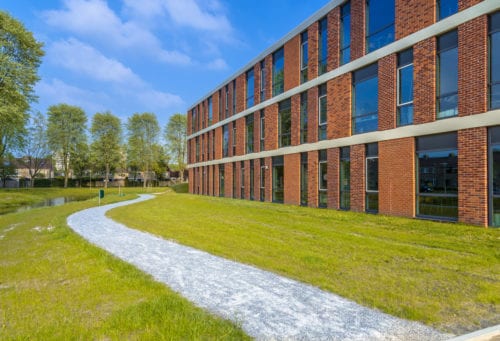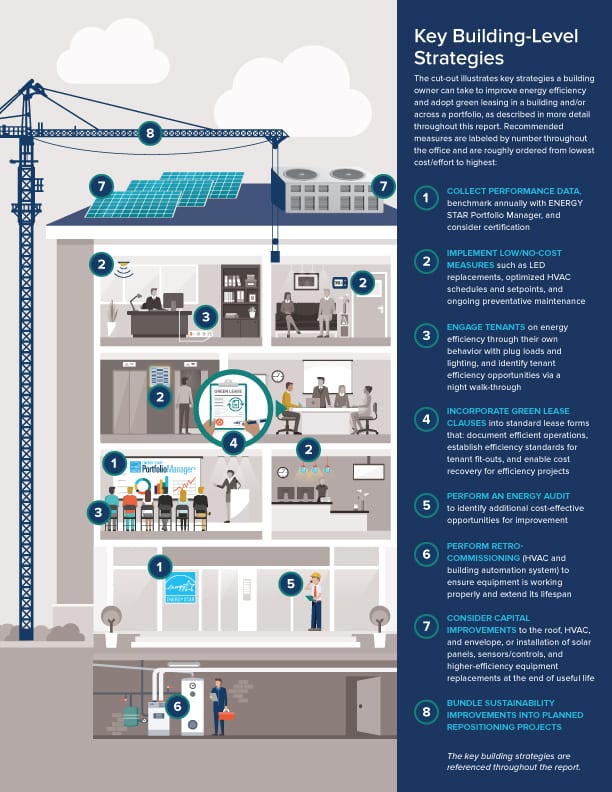Architecture detail of modern office building situated next to park with walking trail on a bright day in spring (Architecture detail of modern office building situated next to park with walking trail on a bright day in spring, ASCII, 113 components,

Report | 2020
Unlocking Hidden Value in Class B/C Office Buildings
It’s time that Class B and C office owners recognize the largely untapped business opportunity to improve the energy performance of their properties through energy efficiency and green leasing. Compared to business-as-usual operations, Class B/C properties could save roughly 15 percent of their energy costs with a bundle of low-to-no-cost measures, and 35 percent or more with larger investments. That can translate into net operating income increases of 2.4 percent to 5.6 percent, and property value increases of $5 to $11 per square foot (i.e., $343,000 to $800,000 for a 75,000 square foot building).
Even with these financial benefits, there’s a reason that the Class B/C office market hasn’t yet wholeheartedly adopted energy efficiency and green leasing into normal course business practices—it’s at a disadvantage compared to the Class A market. These properties are information constrained, resource constrained, and funding constrained.
The recommended low-cost, high-impact strategies and case studies in this report were developed based on primary and secondary research, including a series of in depth interviews with a wide range of Class B/C office professionals. They are intended to simplify and streamline energy efficiency and green leasing opportunities for Class B/C office owners and provide strategies that are appropriately tailored to the reality of the market, anchored around overcoming core barriers for Class B/C building owners.

